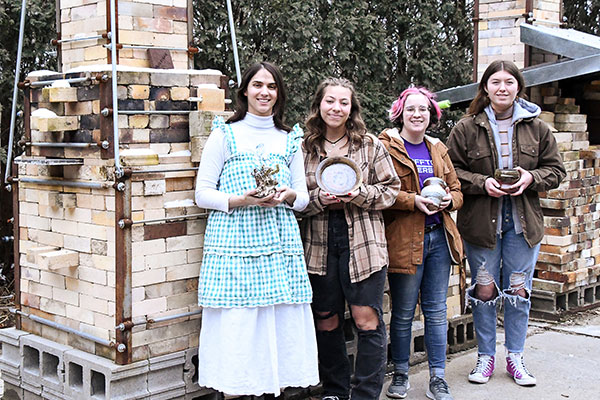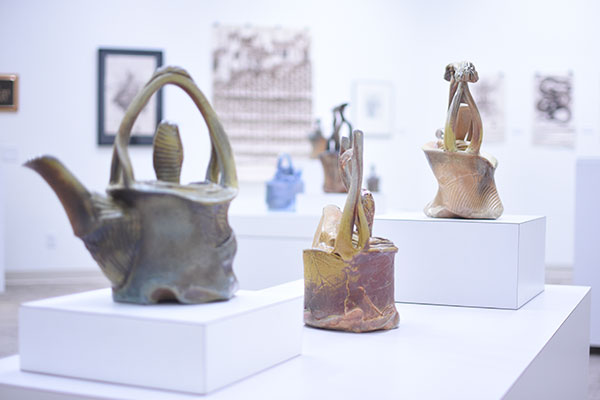New wood-fired kiln
01/30/2023

Ceramics students repurposed donated bricks and other material to build the kiln.
environmentally sustainable art
Behind Bluffton University’s Sauder Visual Art Center, there is a newly built wood-fired kiln constructed by ceramics students and Ralph T.R. Steiner, adjunct professor of art. One of the many kilns at Bluffton, this new kiln is teaching students all about the crafting and refining process of ceramics as well the exciting unknown that comes during firing.
The design is similar to a groundhog kiln, a traditional style of kiln often used in the 19th and early 20th centuries in southern states. With its trainlike design, the kiln is long and narrow and holds in high heat and ashes. The goal is for the kiln to reach an internal temperature of 2,300 degrees Fahrenheit.
The bricks used in the kiln, along with almost all the materials that make up the kiln, were repurposed from refractories and many were donated. In building the kiln, Steiner’s goal was to show that art can be environmentally and financially sustainable.
“The idea behind all the kilns we build here is for students to see that you don’t need a lot of resources,” said Steiner. “You can go out and purchase the latest and greatest or you can be resourceful.”
When asked what makes the wood fire kiln different from the other kilns, Steiner and students explained the idea of surrendering control. Electronic kilns at Bluffton can be programmed to reach certain temperatures and don’t use wood flames.
“There’s a randomness and chance about the process which I find really fascinating because you put all this time into making your work, mixing the clay, making your pots, drying them and disking them,” said Steiner. “It’s a very long process so you’ve got a lot of time invested in it, and then when you put it into the kiln you kind of give up the control you had.”
But the wood-fired kiln also does something special because of the surrender of control. The tiny ash that builds up from the burning wood is called “fly ash” which naturally coats pottery with a glaze. There are also spark and flame marks left on the pottery.
Rosanna Barber ’25, a double major in Writing and Art from Bowling Green, Ohio, commented
that she enjoyed the process because “I have no idea what’s it’s going to turn in
to. Plus, it looks a lot more rustic which is just something I like.”
Both students and professors were encouraged by the new kiln and expressed their enjoyment
of Bluffton’s ceramics courses.
“The fact that we have this much stuff to work with is just awesome,” said Barber.
“I feel like everybody should take this class,” said Malik Echols ’25, a business administration major from Cincinnati, Ohio. “You know, with the right classmates, you’ll have a good time.”
